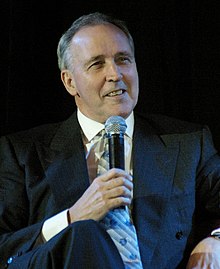Hawke-Keating Government
|
The Honourable Bob Hawke AC GCL |
|
|---|---|
 |
|
| 23rd Prime Minister of Australia | |
|
In office 11 March 1983 – 20 December 1991 |
|
| Monarch | Elizabeth II |
| Governor-General |
Ninian Stephen Bill Hayden |
| Deputy |
Lionel Bowen Paul Keating Brian Howe |
| Preceded by | Malcolm Fraser |
| Succeeded by | Paul Keating |
|
The Honourable Paul Keating |
|
|---|---|
 |
|
| 24th Prime Minister of Australia | |
|
In office 20 December 1991 – 11 March 1996 |
|
| Monarch | Elizabeth II |
| Governor-General |
Bill Hayden William Deane |
| Deputy |
Brian Howe Kim Beazley |
| Preceded by | Bob Hawke |
| Succeeded by | John Howard |
The Hawke–Keating Government refers to the Federal Government of Australia from 11 March 1983 to 11 March 1996. The government was formed by the Australian Labor Party, and was led first by Bob Hawke as Prime Minister and then by Paul Keating. The Hawke–Keating Government began after the Fraser Government was defeated at the 1983 election, and ended with defeat at the 1996 election, which ushered in the Howard Government.
The inaugural days of the Hawke government were distinctly different from those of the Whitlam era. Rather than immediately initiating extensive reform programmes, Hawke announced that the pre-election concealment of the budget deficit by the Fraser Liberal/National Coalition Government meant that many of Labor's election commitments would have to be deferred. Hawke convinced the Labor caucus to divide the ministry into two tiers, with only the most important Ministers attending regular cabinet meetings. This was to avoid what Hawke viewed as the unwieldy nature of the 27-member Whitlam cabinet. The caucus under Hawke exhibited a much more formalised system of parliamentary factions, which significantly altered the dynamics of caucus operations.
Hawke and Keating formed an effective political partnership despite their differences. Hawke was a Rhodes Scholar; Keating left high school early. Hawke's enthusiasms were cigars, horse racing and sport whereas Keating preferred classical architecture, Mahler symphonies, and antique collecting. Hawke was consensus-driven whereas Keating revelled in debate. Hawke was a lapsed Protestant and Keating was a practising Catholic. While the impetus for economic reform largely came from Keating, Hawke took the role of reaching consensus and providing political guidance on what was electorally feasible and how best to sell it to the public. In his first term, Hawke set the record for the highest approval rating on the ACNielsen Poll (a record which still stands as of 2008).
...
Wikipedia
